By all means
How Arsenal prevailed at Spurs; why you need multiple ways to win; what makes tempo so difficult yet important; King Kai and the benefits of going big; plus, an opposition report on Bournemouth
I’ve never done cocaine, but I’ve been to the movies.
You know that moment in the Scorsese film when the fissures start showing, and the consequence-free jubilation of the early second act gives way to something more sinister? How invariably, our once-exultant protagonist starts pacing the room, snapping the blinds shut, and checking his wife for a wire? Well, now you have an accurate picture of me near the end of the 3-2 victory against Spurs. My wife didn’t appreciate it.
Bukayo Saka, as always, was more level-headed.
Interviewed by BBC after the game, the reporter posited that with three left to play, Saka and his team probably “didn’t need three more like that.”
Saka responded: “It’s three points, so why not?”
The reporter laughed. “Good answer. It was a stupid question.”
There are times when it’s important to give appropriate weight to the underlying performances, structural concerns, and the long view. This is not one of those times. The objective of the present moment is simple: scrape together the maximum points, no matter how.
Even so, that was stressful. It already feels so long ago, especially after Spurs just got chastened by Chelsea.
On Saturday, we ride again, and will again take the win however it comes.
It’s three points. Why not?
The North London Derby
Let it not be said that Arsenal were bad against Spurs. It was a nuanced performance. It had just about everything: skill and slop, cold-bloodedness and mistakes, maturity and inexactitude, caginess and over-directness. Ultimately, it had the most important attribute: enough.
Here is our one-page opposition report from before the game.
There are a few over-simplified takeaways here:
Tottenham are vulnerable on the cross
They are worse when they have more of the ball deep
They are disproportionately impacted when they are tackled on take-ons or forced into miscontrols; this is especially true of James Maddison
They do well when Micky van de Ven has a high success rate when passing; they don’t when he doesn’t
Their press is a huge source of their playmaking; if you blunt its success, they are less successful at creation
Yves Bissouma is a big “inflection point” player — if he tackles well (and isn’t tackled deep), Tottenham do well. They struggle when he doesn’t
On the last count, Bissouma proved too much of an “inflection point” for Ange Postecoglou. He was left out of the lineup for the more seasoned pairing of Pierre-Emile Højbjerg and Rodrigo Bentancur, likely out of fear that Rice could hassle him deep.
At the heart of the proceedings for Arsenal was a very functional concern. Tottenham had 14 days of rest, whereas Arsenal had played 4 games in 12 days.
What resulted was a fairly practical press. It had its moments of intensity, but generally speaking, it allowed Tottenham to have the ball, funnel it over to Van de Ven, and then jump from there. Arsenal players were discriminant with their energy, and this may be how you want to play Spurs in any case.
Perhaps the biggest shift was that Trossard and Saka tucked in to follow the inverted Tottenham full-backs. This was especially pronounced when the ball was on the other side (see Trossard here). This makes that final press-breaking pass harder to complete.
Here, you can see a rough approximation of how the press was modulated. The higher this goes up the Y axis, the more intense the advanced defensive actions were (at least in theory); the season average is 9.04, for reference.
This is where a player like Ødegaard helps direct some of the intricacies of a complicated hybrid pressing setup. Sometimes, the pressing assignment is relatively simple: just run, run, run. In this one, the team looked to press in moments, requiring more coordination. If some go and some don’t, you’re screwed.
We’ll get to some of the issues in a bit, but my general feeling is that the purely out-of-possession performance was good-to-great, especially considering the circumstances. They just had to do a little too much defending thanks to the impatience in possession. In all, they generated six high turnovers while a well-rested, highly-intense Tottenham side, playing at home, generated seven.
Here, Arsenal sensed blood. Partey had jumped up to the full-back (Davies), Trossard had pinched in on the other side, and they sensed their moment and went full-force en masse. This is dangerous because it leaves Maddison free in the middle, but is pretty much exactly how you’d hope a situation like this would play out.
We mentioned Bissouma as an “inflection point” when he plays, but the real locus of Tottenham’s creativity is one James Maddison. If you nullify him — as has often happened in the run-in — you usually fare well.
Here are some stats I pulled while researching the matchup.
If Maddison is tackled 3+ times, Tottenham are 0-2-3.
He was tackled 3 times against Arsenal, and had 0 successful take-ons.
If Maddison has 25+ touches in the middle third, Tottenham are 11-2-0.
He had 21 against Arsenal.
If Maddison has 80+ yards of progressive distance, Tottenham are 11-3-0.
He had 39 against Arsenal, with 0 progressive carries.
Tottenham are disproportionately good when they hit through-balls.
They only had one.
One of the reasons that Arsenal were comfortable conceding possession is that players like Son and Maddison are most effective in transitional, streetballing-type moments. In more settled situations, Arsenal’s 4-4-2 can feel nearly impossible to break down. That weird, listless second half against Aston Villa is almost the only time all year it’s looked vulnerable.
As such, Arsenal did a good job of making sure that Maddison was receiving the ball in more boring, crowded situations. They ensured he was never really flowing.
Watch Rice here. You can see how there isn’t a big consideration to sit back and plug lanes; he knows he has to jump and hound Maddison.
The relatively low line of engagement meant that Arsenal could drop back into this block shape with relative ease. After all, the transition stage (from press to block) is when things get tricky. Tottenham would then have plenty of possession in the next phases, but found it difficult to nail the final action. They ultimately scored on two Arsenal mistakes.
As the game went on, Arteta abandoned all semblance of an attacking gameplan and pulled out his “La Masia Moyes” bag. On came Kiwior, and with him, we saw 5 CBs, two DMs, and our giant striker.
If you’re wondering where you’ve seen this before, I don’t want to bring up old wounds.
Eventually, it morphed into something utterly demonic.
Gross. Beautiful.
Naturally, Tottenham turned to cross-and-inshallah to try and generate some chaos in a stacked box. Cristian Romero floated up to a striker role and had three or four great opportunities on the day. The 34 crosses were the most Arsenal had faced all season.
That’s a tall ask for a short keeper. There were some really impressive claims, but more often, they were just well-read situations, dispatched like this.
We even had one of those on-a-platter deliveries from him. I find these drop-kicks to be one of the most aesthetically satisfying plays in football.
At 12%, Raya continues to be Europe’s top claimer of crosses. For reference, Ramsdale’s career number is 5.4%. If that seems like one of those stats that may be getting too much emphasis these days, consider how the game played out: Raya faced 34 and didn’t concede on any of them, whereas Vicario (who is roughly on Ramsdale’s level as a claimer) was bullied on far fewer, and gave up two.
I’m saving our big opposition report on Arsenal until after the year (trade secrets, you know), but here’s a spoiler: The idea that Arsenal’s performances are impacted by Raya’s cross-claiming gets ample support in the underlying numbers.
To date, Arsenal have conceded the fewest shots across Europe (77), which is 17 fewer than the next-lowest (Inter with 94). Reddit user Wright_Wright_ pointed out that in 2019, the team conceded 96 shots after 5 games, including 31 against Watford.
We’ve come a long long way, baby.
Are Arsenal suddenly open for attack?
Before the past week, Arsenal had never surrendered more than 1.5 xG in a league game this season.
They have done it twice since: against Spurs (2.3, or 1.5 non-penalty xG) and Chelsea (1.6 xG). This coincides with the first league uses of the fortified double-pivot of Thomas Partey and Declan Rice. Both lineups featured four centre-backs.
What gives?
My take isn’t too complicated. It’s less about any real frailty in back, and more about hastiness in possession. Like most teams, Arsenal have an invisible tuning dial, which can bounce between too direct and too safe. When Arsenal are in the green zone, it’s really something.
Jorginho and Zinchenko are tempo modulators. They feel the game, and can slow things down or speed things up based on what they feel is needed in the moment. The team doesn’t necessarily have that quality in Partey (who has an inclination to go one-touch and direct, which often leads to chances) and Rice (who is more measured and conservative when deep).
Against Chelsea, things were “heavy metal” (a little Liverpoolish) in the first half, before that tuning dial hit the right frequency in the second, and goals started pouring in. Here are some stats to bolster my case:
First half: 43 losses, 199 passes, 4.13 passes/possession
Second half: 35 losses, 250 passes, 6.25 passes/possession
Some of the shorter possessions were due to losses like this.
It wasn’t all about in-possession stuff. In the first half of that one, Partey did have a tendency to do some things that were familiar to his struggles late last year: he’d fall back and regroup after a team loss instead of challenging directly, perhaps because of fears of getting beaten on the run. This can confuse things — some players jump, others don’t — and helps the other side sustain possession, which in turn reduces Arsenal’s control. When Rice plays in the #6, you can count on him to either delay or disrupt.
Gradually in the second half against Chelsea, though, Arsenal hit their groove — going laterally, slowing things down, then speeding things up in overwhelming bursts. The dial was right, and the 25 key passes were Arsenal’s most of the year.
That dial never really found its sweet spot against Tottenham, though it did in moments. It was a team-wide problem. Almost everybody went direct, every time.
Here’s what Arteta had to say.
“We had an issue with the high press, we gave so many simple balls away when our distribution wasn’t good enough. The scoreline has an impact, but we looked a real threat as well on the counter. They commit so many players forward, and that forces you to be a bit deeper, but we didn’t really concede much there.”
There were times it was because of easier, blind-side losses like this.
A few minutes later, there would be turns like this.
Here, that impatience to create chances nearly paid off. Partey found Ødegaard in behind, who had a slick touch before Havertz found the space and blasted it home (in a sign of what was to come). Ødegaard was whistled for a rare offside call, which looked close and should have been allowed to play out.
There were also a few simple mistakes that weren’t fertile ground for analysis. Trossard has stubborn issues when he’s dropping to face his own goal; he can mis-weight passes and have awkward touches that would be uncharacteristic of his play elsewhere. My theory is that the opponent goal is his beacon. It is the source of all his motivation. When it’s out of view, he loses his sense of purpose.
Looking through Arsenal’s underlying statistics, it shows a team that doesn’t necessarily need a lot of possession to be dangerous, and can probably afford to lose the ball a bit more (as they’re so good on the counter-press). But there’s a difference between being a little less risk-averse and turning things into a Liverpooly basketball game. Finding the sweet spot is difficult.
In the second half, there was more of the Arsenal we know. Tottenham were getting really aggressive in their man-to-man shape, but were also reluctant to have Micky van de Ven leave the backline, lest the threat comes behind.
This meant that there was the possibility of a free man. If you see here, Raya takes a central role in build-up, which overburdens Son. Everybody else is as man-to-man as man-to-man can be. But there is a space:
Ødegaard drops in and exploits van de Ven’s desire to stay back and help with breaks. Gabriel finds Ø and the press is donezo.
And Arsenal used this to sustain attacks a bit better. You can see how possession fared here.
But here’s a perfect press-break where Saliba carries around his mark, uses his left to get the ball to White, and they find Ødegaard free again. But this time, Ødegaard underhits the final pass to Tomiyasu and sends a counter the other way. I can’t tell you how secure a pass like this has been all year. One can only really chalk this up to fatigue.
A lot of attention was paid to Raya’s mistake, and rightfully so. It was a game-changer in the most annoying way possible.
But when looking at the goal, you can rewind to ten seconds before and see how Romero came to be so far up the pitch. Arsenal won the ball up 3-0, then went direct, direct, loss. Romero started a carry and wound up being the player up on Raya.
The problem when there is not a Kroos-style presence to change the tempo depending on the situation is that this direct style gets fairly contagious, the attacks feel more one-note, and the team is put under more pressure out-of-possession; I feel this was somewhat the case at Anfield as well. Arsenal’s mandate was clearly to go direct — which I agree with, and is great — but that probably needs to be balanced with a little more control and subtlety.
Generally speaking, I like being direct and think Arsenal could stand to lose the ball a touch more than they did in the first few months of the season, even if they had their reasons. But it’s complicated.
The following stats were lower than any game this year bar the 0-0 draw against Man City. Arsenal had:
Second-fewest completed passes total
Second-lowest possession
Second-fewest medium passes
3.48 passes/possession
They completed 121 fewer back-or-lateral passes than their usual numbers. Ødegaard completed his fewest passes of the year.
There are two huge caveats to any critique here. For one, they won. For another, there were game-state effects throughout everything, not to mention fatigue and a few mistakes against a well-rested opponent.
Future tempo
Moving forward, the team is likely to move on from Partey. The objective will be to recreate some of his qualities in the aggregate. One way this can be done is through the increased presence of Timber, who was the Eredivisie’s most present and successful possession-hound.
This was another game that showed the need for an additional midfield profile in the summer. When facing mid-blocks like Porto, the highest level of passing precision and technicality is needed; against Tottenham, a little more balance is required: the athleticism to defend transitions, the clarity to hit line-breakers, and the calma to slow things down. Whatever baggage we bring, the links to Bruno Guimarães make a ridiculous amount of sense.
But we shouldn’t discount the continued growth of Declan Rice.
Going back to our scouting report from before he signed, we envisioned him in a transitional year, playing #6 against the lower-blocks and #8 against the tougher sides.
Rice’s flexibility is a feature, not a bug. I don’t think Arsenal have to rigidly choose between playing him at the 6 or the 8 in the short-term. Whatever his role, what matters most is to max out his defensive coverage and his opportunities to carry the ball forward with abandon.
I would suggest that Rice currently has marginally more plug-and-play potential at the 8, and more long-term potential as a best-in-world type at the 6.
Players can be more than one thing. In a fascinating profile for The Athletic, here’s what Rice said about Arteta’s pitch.
“He said that you have goalscoring capabilities and capabilities to make assists and make things happen,” Rice recalls. “But obviously he knew my biggest strength was probably playing No 6.”
There are variations on the role, and his iteration of the #6 doesn’t have to look like others — especially when you consider Arteta’s focus on playing with “good height,” where he can push the team forward and assist in the highest attacks. With links to midfielders like Guimarães, there’s a chance of Rice being a purpose-built double-pivot role where he has all the advantages of typical 6’s and 8’s, and he can bring everything you like about him in both roles.
But as you watch him control play with a slightly conservative bent, and project his peak as a deeper midfielder, some questions can help ground us:
Q: Could we have reasonably expected any better in his first year in a positional system? A: Not really.
Q: How many dangerous low losses has he had this year? A: Not many.
Q: Has he shown the technical ability to hit almost every type of pass? A: Yes.
Q: Does he have an aggressive, impatient side, or is he fundamentally conservative by nature? A: Yes, he can be very aggressive. He is just the most controlled version of himself lower on the pitch.
I love the flexibility Rice has been able to display, and am hopeful that there is a more stable set of responsibilities that allow him to show both maximum big-space destruction and “good height” output. Especially if he gets a role tailored to his unique abilities, there is more story to tell.
Bash some nerds
“Billy, that was a whole lot of text devoted to tempo questions for a game in which Arsenal were up 3-0 and only lost control because of a silly mistake.”
You’re right.
So how’d they win?
By stuffing them in the locker.
They’ve now drawn equal to the club record for headed goals, and I personally think they’ve left some on the table for Havertz by not hammering home more back-post crosses.
Rice paid homage to the role of Gabriel in this dominance.
“If you watched him (Gabriel) train, he scores about three of them a day,” Rice says. “He’s so aggressive. We play against the kids, he doesn’t care. It’s like he’s playing in a Premier League match. He scores goals for fun in training. No wonder he does it in games.”
In the words of Michael Jordan, fuck them kids.
For all set plays, you’ll see Gabriel playing a central role in ideation, communication, and all kinds of subtle tricks that open up opportunities. He deserves a lot of credit.
Some factors are more obvious and have gotten the requisite attention. The first is the deliveries of Bukayo Saka and Declan Rice. To my eye, Saka’s deliveries can dip a bit when he’s tired, but when he’s fresh, they are often the perfection we witnessed at 14’. On the other side, Rice continues to deliver banger after banger.
The other factor is Ben White’s shit-housing. Much has been written about his use of Dark Arts, which, coincidentally, is the name of his preferred tanning salon.
There’s honestly nothing particularly novel there. In fact, his impact may teach us more about the opponent’s preparation than about White; the more meticulous planners like Man City, Porto, and Burnley have worked hard to counter this strategy. Ange Postecoglou is more “vibes” about set pieces and it cost him.
I’d like to call attention to something else that I’ve harped on over the years: the team's overall makeup. I’ll explain. Every set play has a “big guy ratio.” The defending team usually sets up an array of zonal markers; if your “big guy ratio” is better than theirs’, you will be able to isolate better matchups and find somebody to bully.
Look how many big players are in the box for Arsenal:
When you play Havertz, every subsequent matchup improves. There was also no Jorginho or Zinchenko in this lineup; instead, there was Partey and, crucially, Tomiyasu, a world-elite aerial presence (even if he’s not quite elite at heading these home quite yet). This leads to a series of better matchups across the line: Romero is defending air while Gabriel goes against Maddison and Havertz faces down Kulusevski. With these cascading advantages, it’s no surprise (or lucky stroke) that there was an own goal.
You can see the series of mismatches here. Even if Tomiyasu didn’t have the best day in possession, his inclusion in the lineup loomed literally large, because it improved every single matchup you see here.
Moving into the second half, we saw Gabriel run a pick play that got Tomiyasu completely free for a header he probably could have driven home.
When asked about set play defending after the game, Postecoglu gave an answer that I found completely bewildering.
“I'm not interested. Never have been. Not in the least. It's not the first time I've been questioned about set-pieces in my coaching career. There is an underlying reason for that which I'm very, very comfortable with.”
“To quote Billy Joel, ‘you may be right, I may be crazy, but it's maybe a lunatic you're looking for.’ Eventually I will create a team that has success and it won't be because of working on set-pieces.”
I actually went back to watch the press conference to make sure he actually said that, as you can never really trust the football media to do accurate transcription.
Well, he did. As rivals, that should make us feel better about the future and worse about their prospects against Man City.
I think Postecoglu’s stubborn focus on team identity is smart, especially early in a tenure. Having a coherent belief system has compounding effects, and it’s more important than a point here and there while you’re rebuilding; it’s what often separates the successful club reboots from the shitty ones. But his obstinance on this matter sounds like malpractice, and may be a genuine warning sign about the limits of worldview. He’ll keep shipping easy goals or he’ll finally gain some curiosity about set pieces and the like. In a game increasingly cruel about exploiting the fine margins, it’s one or the other.
It was no surprise, then, that Chelsea ran the exact same play yesterday, and got a goal out of it.
I’m not interested, mate.
Meanwhile, Havertz may have had his best performance in an Arsenal shirt. He had a goal and assist and contested 30 duels in all; like Ødegaard’s freer role, this one helps a smart “fixer” to float around and help anywhere as he sees fit. He was active all over the pitch. Here’s a look at his total actions:
Most intriguing was this pass in open play that set up the Saka goal. He has shown that this is a capability — not just at Leverkusen, but at Chelsea too — but we didn’t see much of it as he focused on the basics in the first part of the season. Now that his confidence is back, we may continue to see interesting hits of the ball.
Kai’s emergence at striker has been significant, not just for this season but for the summer’s transfer plans. I’ve got him at 12 G+A in 880 total minutes (or 9.7 full-90s). He’s been successful across game states and types, as it’s proven to be more than a big game thing.
Let’s include a clip of that Chelsea goal, just because.
…and oh yeah, the other one.
If there is a nit to pick with his game, it’s about how many shots he is creating for himself. Top strikers are almost always top shooters, and I’ve got him a 1.69 shots per 90 as a striker across competitions this year. Ideally that number would double. You’d at least like to see it in the Firmino range (like ~2.5/90), which he’s closer to reaching in the league.
Fun fact:
Kai Havertz has 12 goals on 57 shots (plus one penalty attempt)
Darwin Núñez has 11 goals on 104 shots (plus one penalty attempt)
There’s a lol interpretation of that (haha Núñez); there’s a positive interpretation of that (Havertz has been relatively clinical); there’s a growthy interpretation of that (Havertz could serve to find more shots for himself). They all have truth to them.
Still, I suspect the manager hasn’t fully abandoned his Havertz at SS (“high-8”) dreams, as we saw as recently as last week. I’ve seen reports that Jesus could be moving on and that a top striker could be acquired; I’m admittedly very sentimental about Jesus, his impact on the team, the skill and flexibility he brings, and the amount of belief he has instilled in this young squad. At this moment (with the injury purgatory), I have trouble envisioning an offer commensurate with his potential impact to the team. I’d love for him to stay.
Whatever the future holds for Havertz, it’s on the upswing.
In awe of Saka
Finally, I just saw that Saka didn’t make the top-5 of the FWA Footballer of the Year, and while I don’t care about that kind of shit, I must do my small part in making sure that perceptions of him remain accurate.
The horizon is as beautiful as ever; eyes are just adjusting.
Of note:
Saka is at 33 G+A across competitions this season
He’s the top winger in Europe’s top-5 leagues in shot creation (175 shot-creating actions)
He leads Europe’s top-5 leagues in touches in the attacking third (1241) and touches in the attacking pen (250)
He leads Europe’s top-5 leagues in advanced tackles (20)
He is second in the Premier League in progressive carries (151)
He handles corners, penalties, and so much more
There are players with more “novel” seasons — shiny toys and all that — but every single week, the world’s best managers tell us who they think Arsenal’s most dangerous player is, and then they give him more attention than almost anybody in world football.
Everything started with him. Everything comes back to him.
Bournemouth and beyond
Tomorrow looms enormous.
Bournemouth have been one of the best teams in the league for a while now. Here’s a quick look into their opposition report.
There’s a lot of interesting — perhaps perplexing — stuff in there.
The short version is this: they have a really dynamic press, which generates a lot of high turnovers and action. They’re second in defensive actions leading to shots (after Everton), and they lead the league in fouls (470). They combine this with a lower-possession outlook (44%) and direct attacks; they have the third-quickest direct speed, the third-fewest passes per sequence, and the fifth-most direct attacks in the league. This results in a good amount of take-ons leading to shots (second in the league) and the most miscontrols in the league (591). As you’ll see in the stats, they fare worse in measured, patient, short possession; if the ball is too securely at their feet, they don’t do a lot of creation (which is why you see stuff like “total pass success rate” having a negative correlation, which isn’t often the case). They’re dangerous, and a different side than we faced last time.
Arteta just faced the press and started with a welcome note: “Everybody is fit and available so now it’s a headache to make the right selection. Good headache.” That, of course, includes Jurriën Timber.
Here’s what else he had to say.
Just focus and put all your energy in finding that determination and willingness to do our best to earn the right to win games. The first one is Bournemouth, it’s at home, it’s going to be an unbelievable atmosphere again towards the game. Be present and be in the moment and let’s see what happens.
From here, the team gets a chance to write their own ending. It depends on external factors, but nothing is more important than what is in front of them.
Three points, please, by any means necessary.



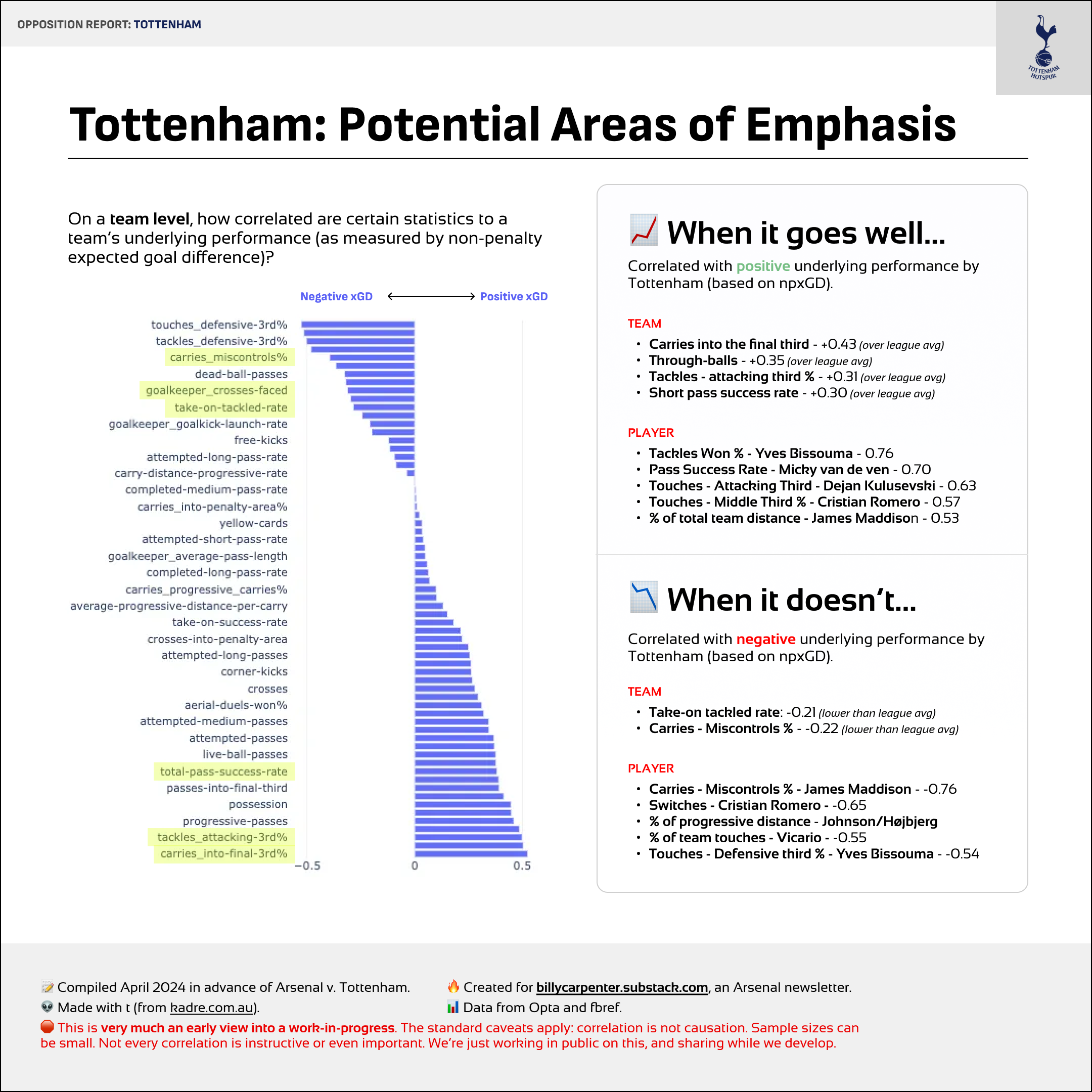
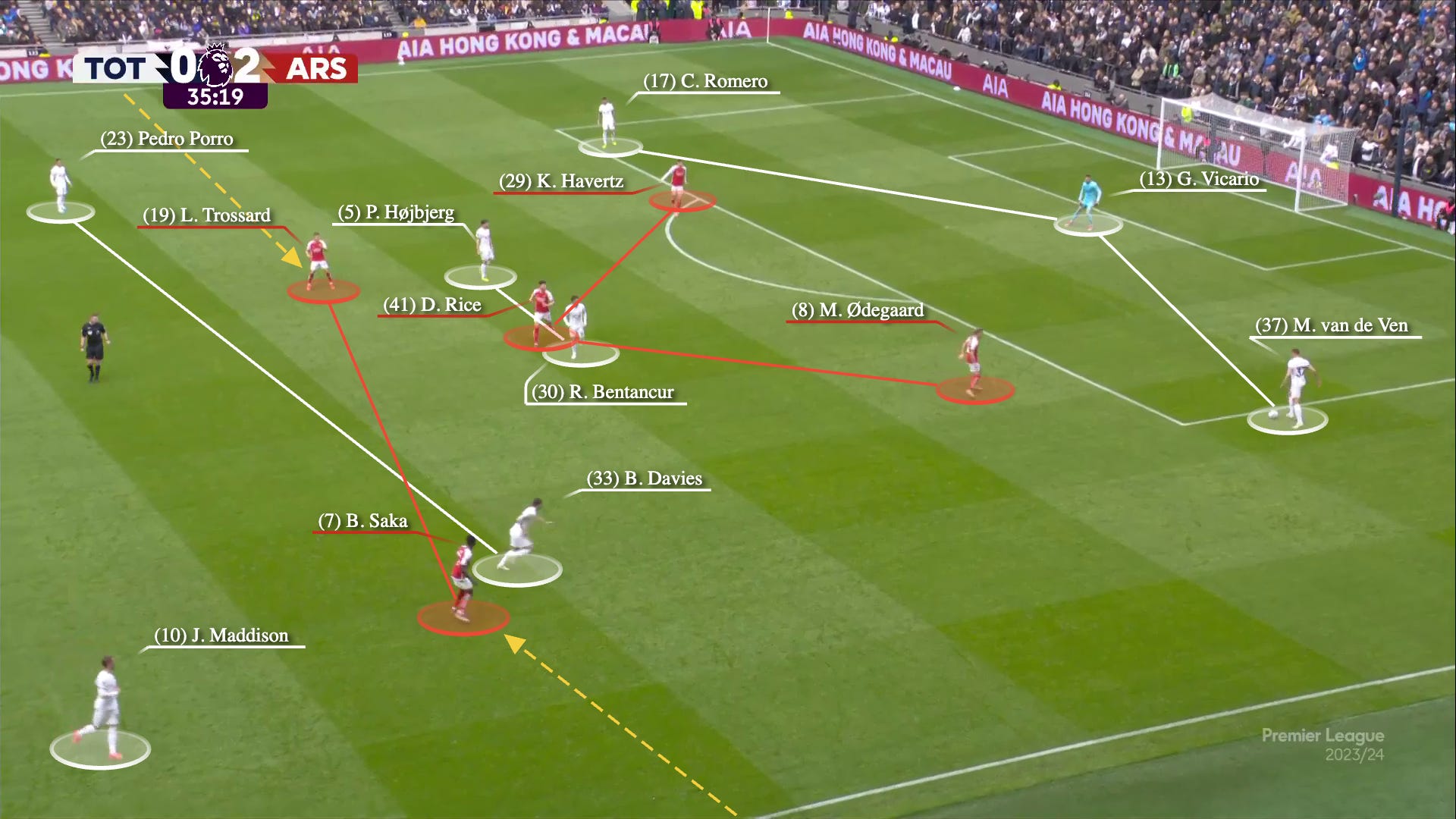



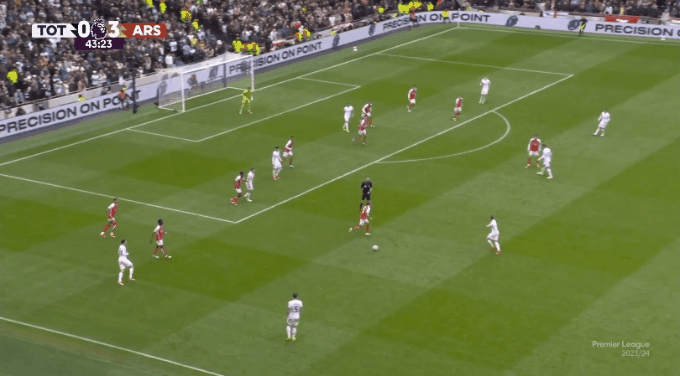





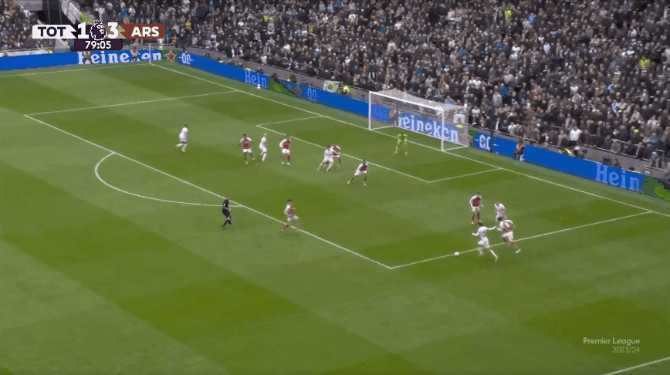

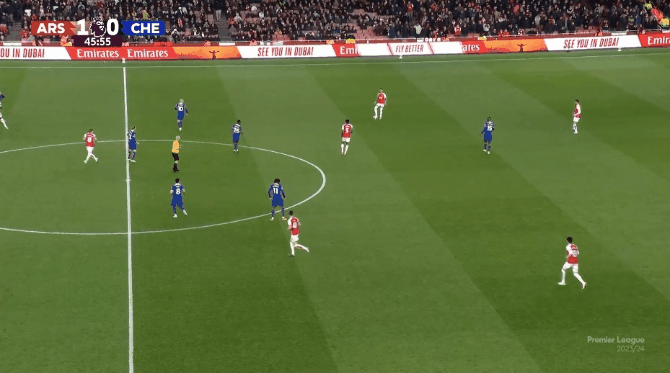

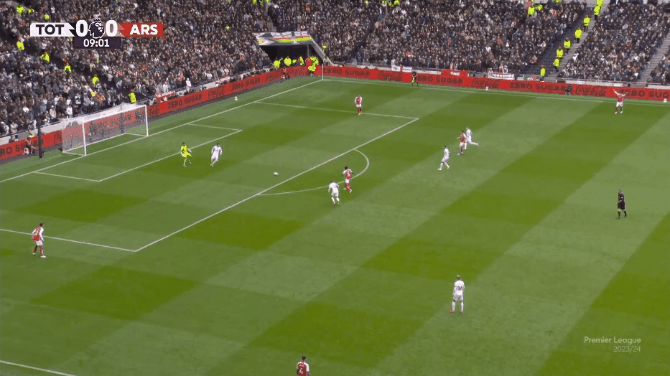
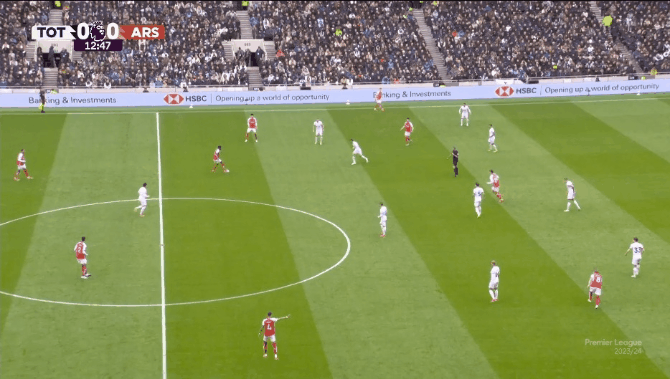


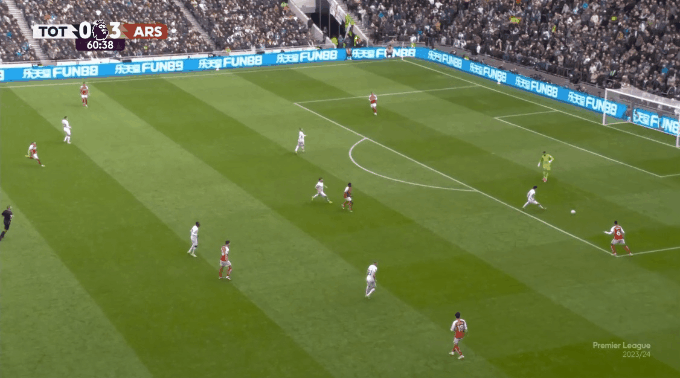

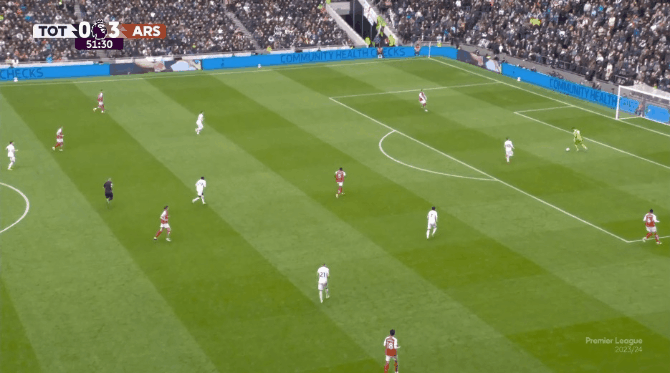
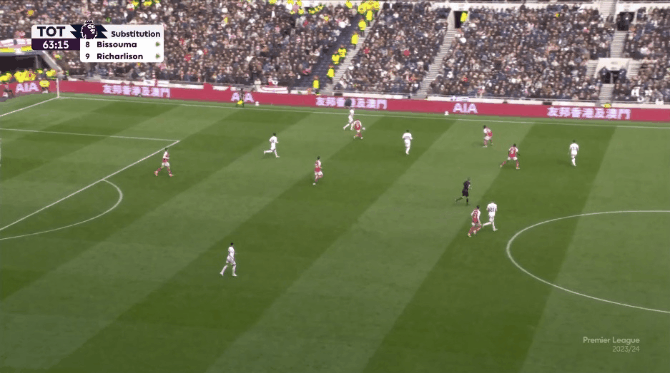

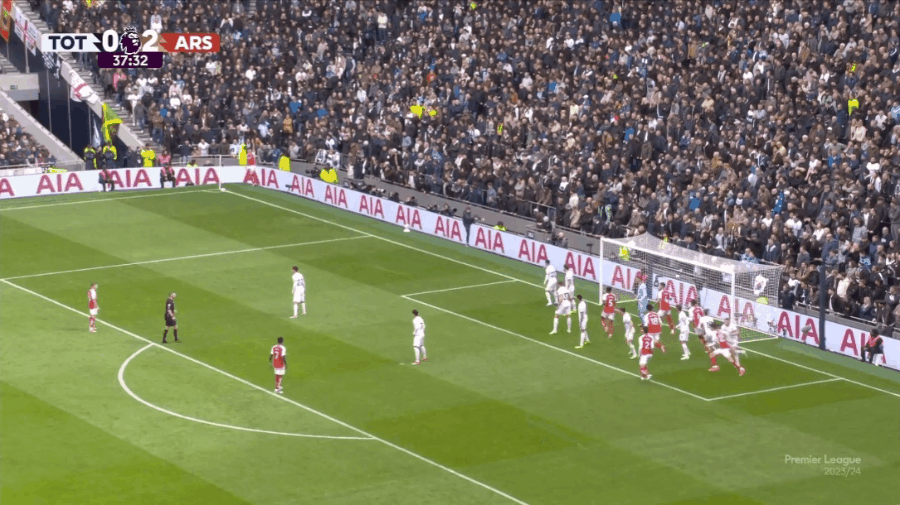











Impressed with Micky van de Ven. He covers an awful lot of their sins with his speed.
Such a Timber fan after seeing him in person against MLs all-stars. He’s the complete package as a defender. I really could see him owning LB next season like White has RB.
OMG, Hallelujah, I was actually having withdrawal symptoms ..